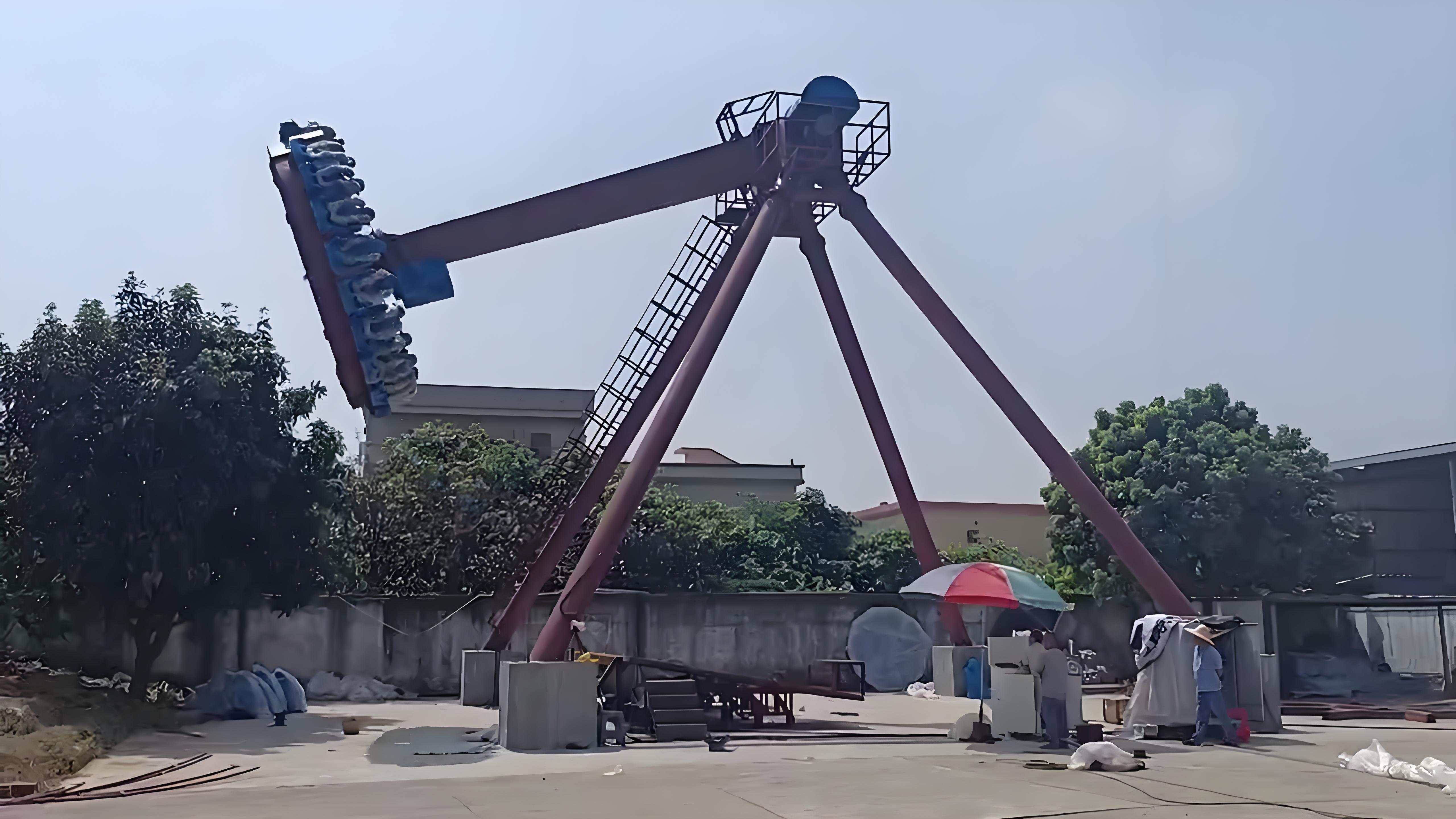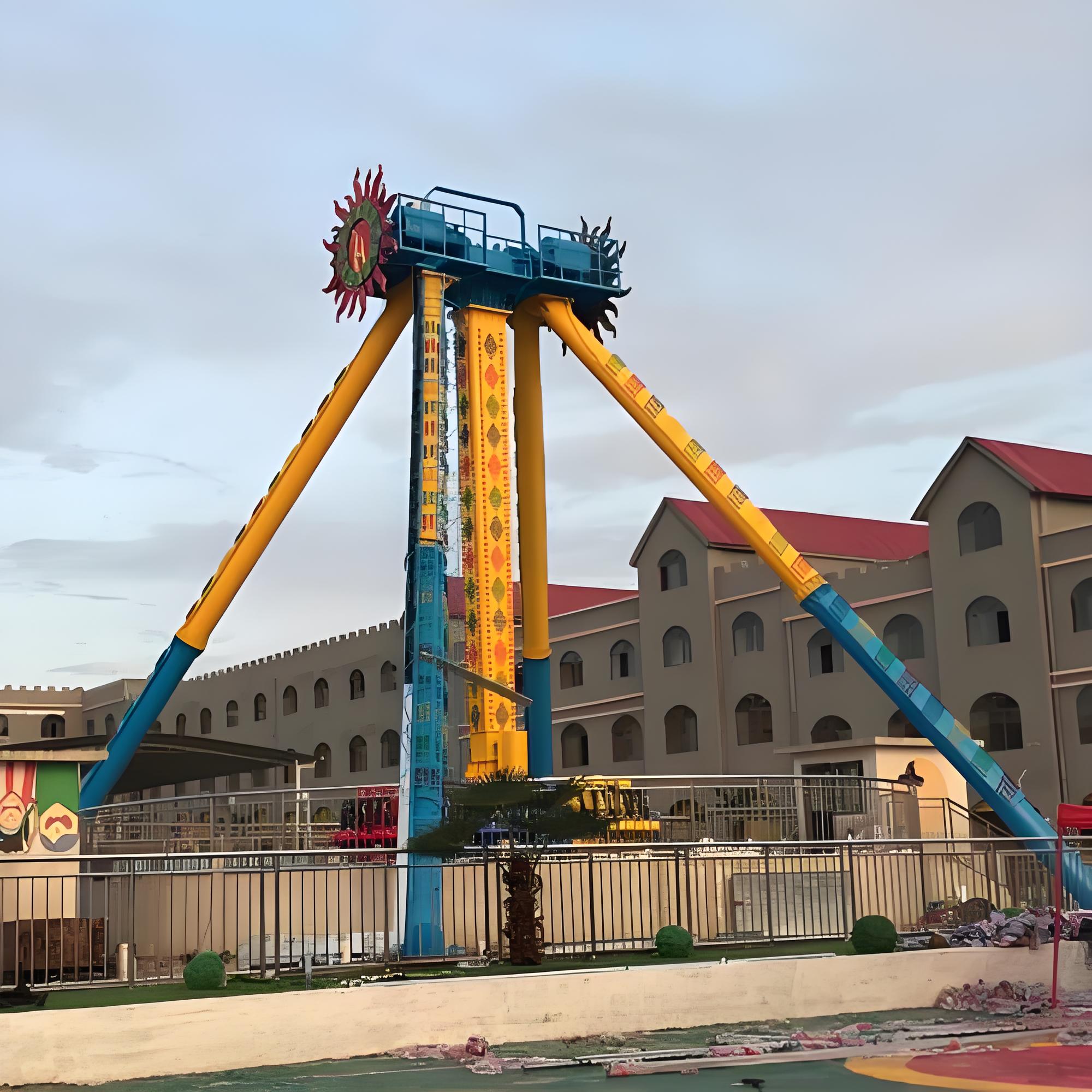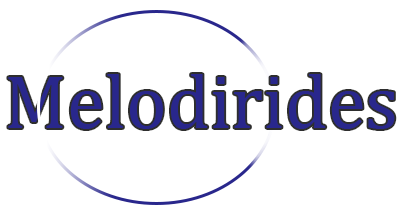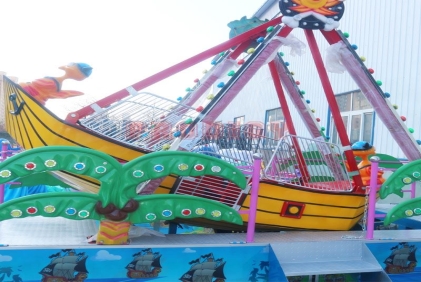Ensuring Safety in Amusement Rides: A Co...
| PRODUCT PARAMETERS | |
| Height: | Can be customized |
| Land occupation: | Can be customized |
| Number of people: | Can be customized |
| Power: | Can be customized |
| Power Supply: | 380V |
| Application scope: | Amusement parks, theme parks |
Child -AmusementEquipment: PotentialSafetyHazards
When it comes to child - amusement equipment, there are several safety hazards that parents, operators, and manufacturers need to be aware of.
One of the most common hazards is entrapment. Small children are naturally curious and may try to squeezeinto small spaces within the equipment. For example, in some older - style playground structures with large gaps between components, a child's head or body could potentially get stuck. This not only causes panic for the child but can also lead to serious injuries if not resolved quickly.
Another significant hazard is falls. Many children'sRidesand playground equipment have elevated parts such as slides, climbing walls, or platforms. If the equipment is not properly designed with appropriate guardrails or if the landing surfaces are hard and not cushioned, a fall can result in broken bones, concussions, or other serious injuries. For instance, a poorly - maintained slide with a rough surface can cause a child to lose their balance and fall off during the descent.
Moving parts also pose a major risk. In rides like merry - go - rounds or small trains, there are often gears, chains, and other moving components. If these are not properly enclosed or if there are gaps where a child's fingers or clothing could get caught, it can lead to lacerations, fractures, or even amputations in extreme cases.

Sharp edges and protrusions are yet another concern. Some older or poorly - manufactured equipment may have metal or wooden parts with sharp edges. A child brushing against such an edge could easily get cut. Similarly, protrusions on the equipment can catch on a child's clothing or cause them to trip and fall.
Finally, the stability of the equipment is crucial. If a piece of play equipment is not properly anchored to the ground, it can tip over, especially if multiple children are playing on it at the same time. This can lead to a pile - up of children and serious injuries.
Safety Requirements and Facilities for Amusement Rides
Amusement rides must meet certain safety requirements to ensure the well - being of all users.

First and foremost, the structural integrity of the ride is of utmost importance. The materials used in the construction of amusement rides should be of high quality and able to withstand the rigors of regular use. For example, steel used in roller coasters must be of a specific grade and thickness to ensure it can handle the high speeds and G - forces. The design of the ride should also be carefully calculated to distribute weight evenly and prevent any structural failures.

Safety facilities such as seat belts, harnesses, and lap bars are essential. In roller coasters and other high - speed rides, these restraints are designed to keep riders securely in their seats during the ride. They should be adjustable to fit different body sizes and easy to use for both operators and riders. For instance, modern roller coasters often have multi - point harnesses that provide maximum protection.
Emergency stop systems are also a must - have. These systems should be easily accessible to both operators and, in some cases, riders. In the event of a malfunction or an emergency situation, the emergency stop can quickly halt the ride, preventing further harm. For example, on a ferris wheel, there should be an emergency stop button located at the operator's station as well as in key areas around the ride.
Lighting is another important safety feature, especially for rides that operate during the evening or in low - light conditions. Proper lighting ensures that riders can see clearly and that operators can monitor the ride effectively. Additionally, it helps to prevent accidents caused by poor visibility, such as tripping on steps or platforms.
Finally, regular maintenance and inspections are required to keep the rides in safe working condition. Amusement rides should be inspected daily for any visible signs of wear and tear, and more in - depth inspections should be carried out on a regular basis by qualified technicians. This includes checking the mechanical components, electrical systems, and structural elements of the ride.
Safety Usage Knowledge of Children's Playground Equipment
When it comes to using children's playground equipment safely, there are several key pieces of knowledge that parents, guardians, and children themselves should be aware of.
First, children should always be supervised by an adult. Even if the playground appears to be safe, unexpected situations can occur. An adult can quickly intervene in case of a fall, a dispute between children, or if a child gets stuck in the equipment. For example, if a child is attempting to climb a particularly high structure, an adult can ensure they are using proper climbing techniques and provide assistance if needed.
Children should also be taught the correct way to use each piece of equipment. For slides, they should be instructed to sit down and keep their feet and hands inside the slide at all times. Running up the slide is a dangerous behavior as it can lead to collisions with other children coming down. For swings, children should be told to sit properly on the seat, hold on tightly to the chains or ropes, and not try to stand up or jump off while the swing is in motion.
Before using any equipment, it's important to check for any visible signs of damage. This includes looking for cracks in the slides, loose bolts or screws on climbing structures, or frayed ropes on swings. If any damage is found, the equipment should not be used, and the relevant authorities should be informed immediately.
Children should also be dressed appropriately when using playground equipment. Loose clothing can get caught in moving parts or cause tripping hazards. For example, scarves, long - flowing dresses, or drawstrings on hoodies should be avoided. Closed - toe shoes are also recommended to protect feet from injuries.
Finally, children should be taught to share the equipment and take turns. Overcrowding on playground equipment can lead to accidents. For example, if too many children try to use a small climbing structure at the same time, it can become unstable, increasing the risk of falls.
Safety Standards and Insurance Measures for Amusement Rides
Safety standards for amusement rides are set to ensure the highest level of safety for riders. These standards cover a wide range of aspects, from the design and construction of the ride to its operation and maintenance.
Design standards specify the minimum requirements for the strength and stability of the ride structure. For example, the height and angle of a roller coaster's drops, loops, and turns are carefully regulated to ensure that the forces exerted on riders are within acceptable limits. Materials used in construction must also meet certain quality and durability standards.
Manufacturing standards ensure that the ride is built according to the approved design. This includes strict quality control measures during the production process, such as testing of individual components and the final assembled ride. For instance, all welds on metal structures should be inspected for strength and integrity.
Operation standards govern how the ride is run on a day - to - day basis. This includes operator training requirements, safety checks before each ride cycle, and emergency response procedures. Operators should be well - trained in the proper operation of the ride, including how to start, stop, and



















